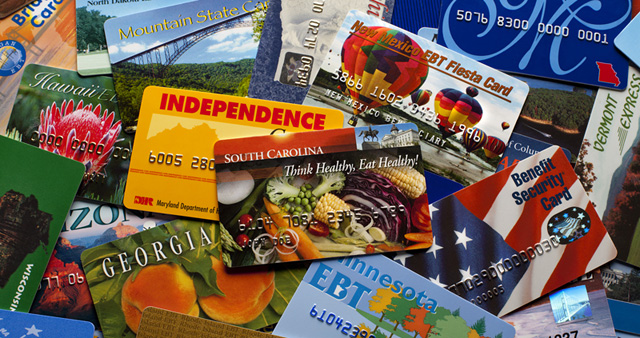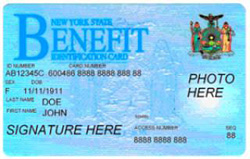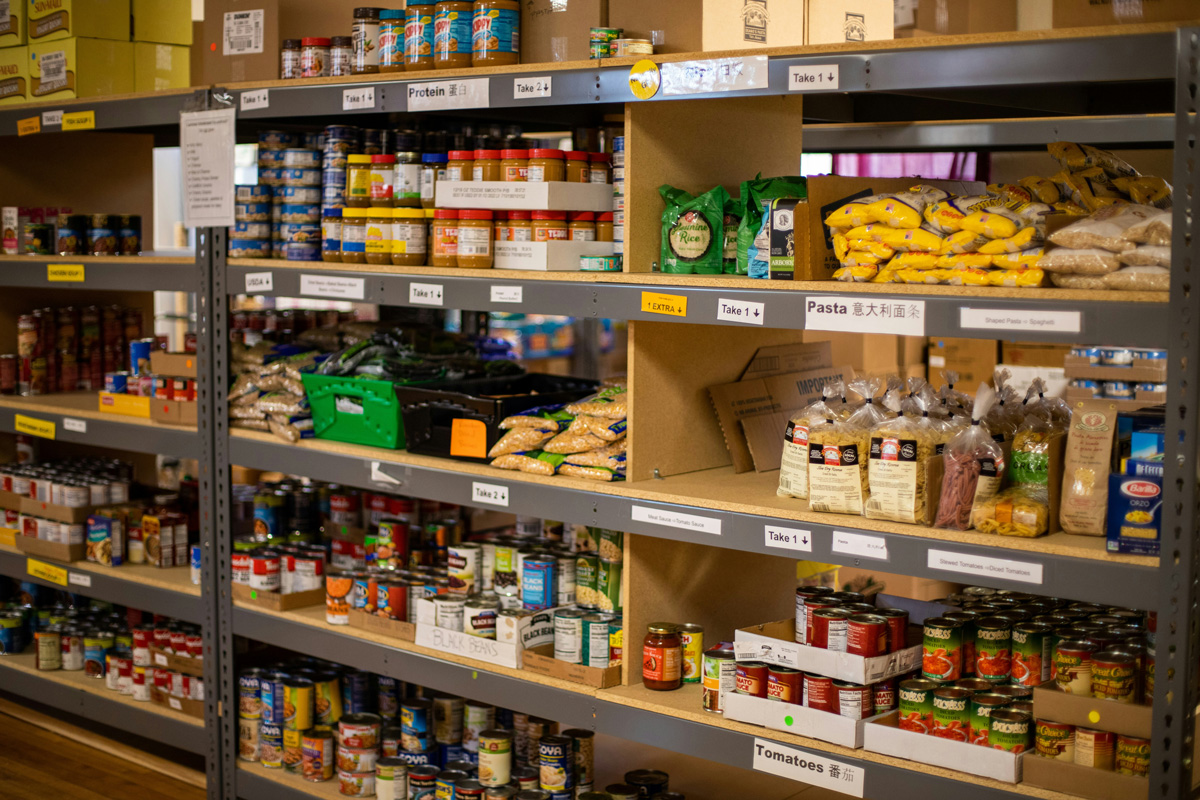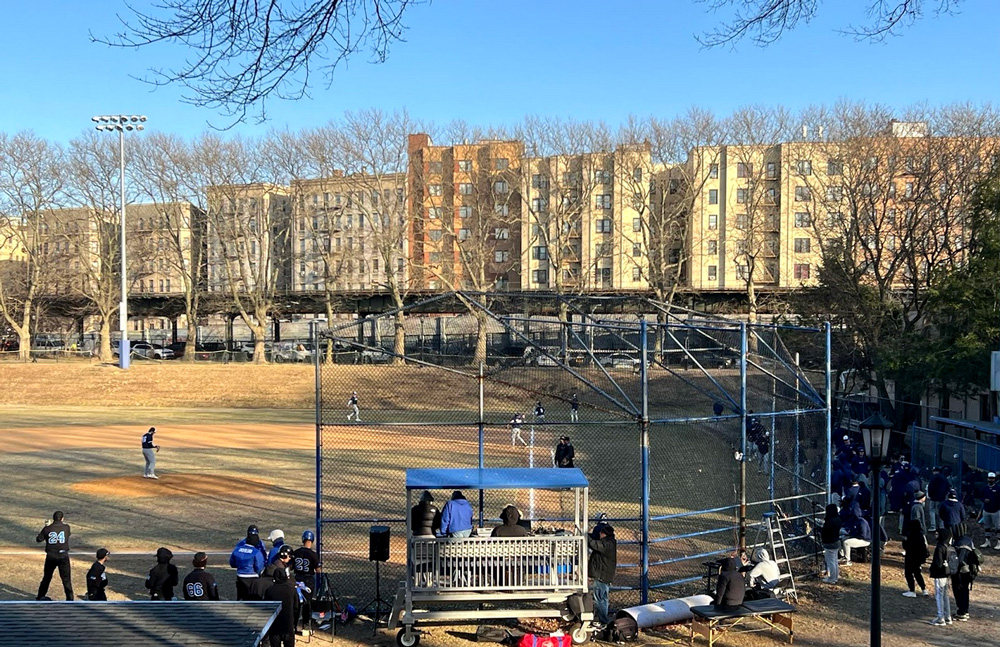EBT cards from various states
By Jessica Schira
Since the recession of 2008, there has been a growing number of people that are unemployed and falling into poverty in the five boroughs. New York City residents from diverse backgrounds and professions today depend more on government programs such as SNAP (Supplemental Nutrition Assistance Program), or food stamps. According to data from the Independent Budget Office, 1.8 million residents receive food stamps. This number has more than doubled in the last decade. In 2002, 800,000 New Yorkers received food assistance.
Who is using the program? According to 2010 data from the Congressional Budget Office, three of four households using food stamps include a child, a senior citizen, or a disabled person. The annual income of these families was on average $8,800 and they received an average SNAP benefit of $287 a month. Many people receiving food stamps are also working, according to the Center on Budget and Policy Priorities. In families with children receiving food stamps, 60 percent work and 90 percent have worked within a year before or after.
Today, the future of the program is in question as Republicans in the House of Representatives are debating its effectiveness. Program critics say SNAP is prone to fraud and serves as a disincentive to finding work.
We spoke to food stamp recipients from the Bronx and Brooklyn who shared their experiences with the SNAP program. We also spoke with supermarket staff who shared observations of how their customers use food stamp benefits.
Heriberto Moreno, 45, is currently studying to become an alcohol and substance abuse counselor. “I work full-time and I receive food stamps,” he says. “It is not a lot of money, but at least is something.” One thing Morena finds perplexing is that food stamps do not allow recipients to buy hot food. “It is still food,” he says. This restriction was temporarily lifted in the aftermath of Hurricane Sandy, says Edward Holguin, owners of Juedra Grocery store.
Single mothers are the biggest users of food stamps in his store says C-Town Manager Jaime Luna, 34. “This is a very diverse neighborhood,” he says. “However, single mothers are the ones that buy more with food stamps. Basically people here buy what they need and that’s it.” Luna says food stamps are nothing to be embarrassed about, but he sometimes sees customers who are uncomfortable when paying with their EBT card. “I get the case when they do feel ashamed, but most are more open about it. There is nothing to be ashamed of.”
Adavie Gutierrez is a multimedia journalism student who works as a waitress. She applied for food stamps recently and the program allotted her $50 a month. “The process was a bit frustrating because they were saying at first that I wasn’t eligible if I work and go to school. But I was working zero to one day a week and receiving unemployment,” she says. “I am a full-time student and spend the whole day in school. The food here is expensive and I have to pay bills too. It is not enough money for me to buy food for a month.”
Applying for food stamps can be a time-consuming process and some get discouraged. Melida Tejeda, 55, is beauty salon owner who applied for food stamps in 1987 when she was going through tough economic times. She explains that she applied three months after she arrived from Massachusetts. Her daughter was two and son was four months. Her husband earned $179 a week.
The experience, she says, was dismal. “I am never going to apply for food stamps again, that is how frustrating the process is,” says Tejeda. “I came from the office crying and saying I won’t go through that again.” Instead, she decided to send her kids to her mother in the Dominican Republic so she could have more time to work. In 1989, she saved enough money to open her business and bring her kids back. Tejeda says in retrospect, she is glad she never received them. “I thank God for everything because if I had qualified for food stamps, then I might be stuck in the same place for years,” she says.










CJ Sharp | September 11, 2013
|
At BronxWorks, we have a program that can facilitate and expedite the SNAP application process: http://www.bronxworks.org/snap-outreach. Generally, this can avoid the long wait and headaches of going to the SNAP office. Read story #35 on our website to see how we helped one neighbor acquire food stamps when she didn’t expect she would ever need them.